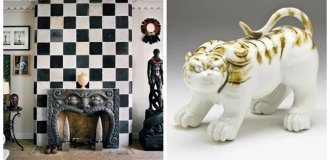An entire era in the arms industry

Historically, at the end of the nineteenth century, local gunsmiths did not produce short-barreled concealed weapons for the Russian army. At that time, the Smith and Wesson revolver was used, which performed well in the Russian-Turkish war, but its weight and technical performance left much to be desired. For a country that is constantly in armed conflicts, defending its borders from attacks by enemy armies, a self-cocking weapon was needed for shooting at short distances. Russian military commanders organized a grandiose tender of that time for all gunsmith designers in Europe. The task was not easy, but it was thanks to this that the revolver became the most widely produced in the world and became legendary among weapons connoisseurs.

Among them were the following:
The revolver must stop a horse from 35 meters, or pierce half a dozen inch boards from the same distance.
The initial speed of the bullet must be more than 300 meters per second.
The weight of the revolver should not exceed a kilogram.
The caliber should be three lines - 7.62 mm according to the new standards.
The drum capacity should hold more than the then standard six rounds.
Smokeless powder was used and the case material should be brass.
A huge number of demands were put forward to the manufacturer, but most of them described the tactical and technical characteristics of existing weapons that were used by the Russian army.

Belgian gunsmiths Leon and Emil Nagant were already developing such a revolver at that time. However, the caliber of their revolver was 5.45 mm, and there were only six cartridges in the drum. The brothers resorted to a trick - they made two dozen revolvers and presented them to the Russian Tsar, all the ministers and military commanders. The tender for choosing a gunsmith ended before it even began. Even several years later, the revolvers presented by European gunsmiths could not surpass the revolver of the “revolver” system.
To meet all customer requirements, the designers had to create a new seven-round drum and increase the bullet caliber by using barrels from three-line rifles. Having fulfilled all the terms of the contract, the Nagan brothers supplied twenty thousand revolvers to the Russian army within three years and ensured the production of the Nagant at the Tula Arms Plant.

Belgian gunsmiths also provided two versions of their creation. By slightly changing the design of the revolver, they made it so that the revolver could now have a self-cocking mechanism, as well as a manual cocking mechanism. This change affected the price of the revolver. Thus, an ordinary soldier was supposed to cock the hammer with his finger during battle, and officers received self-cocking weapons.

Having studied the drawing for the Naganov pistol patent, any gunsmith could reproduce it without much effort. After all, the design of a revolver "revolver" is simpler than any similar competitor. A few years later, revolvers of the same name with a reduced bullet caliber began to appear in the United States, South America and Europe. However, the entire mechanism was very similar to the Tula revolver - a revolver. Photos taken by reporters over a century confirm this fact:
Self-cocking firing mechanism, which retracted the trigger by pressing the trigger.
Monolithic, non-demountable revolver frame.
The ramrod tube in the firing position is retracted inside the drum axis. The barrel is screwed into the frame with a tight fit.
The entire trigger mechanism is mounted in the frame and covered with a removable cover.
Smokeless powder is used.
On the other hand, it was precisely thanks to the growing popularity of the revolver throughout the world, and, accordingly, mass production, that a large leather holster for a revolver appeared. Historical documents indicate that there were no holsters in tsarist times. However, if we talk about the production of a revolver in Serbia, then a holster for it appeared there, exactly the same as the one used by the Red Army.

If you look at history, be it a textbook, a film or a documentary video, you can first of all pay attention to the lack of a large assortment of weapons among the warring parties. The Maxim machine gun, the Mosin rifle and the most popular weapon, the revolver. The revolver is present among fighters on both sides of the conflict. Any military man will confirm that the fewer types of weapons there are in a war, the greater the likelihood of finding the necessary ammunition for your weapon in battle.
To conduct a battle you need the weapon itself, supplies for it and its fault tolerance. And if we take into account that the cleaning and disassembly of the revolver "revolver" was carried out in a very short time, then this can explain why all participants in the conflict liked it. Until the start of World War II, the revolver's only significant drawback was the difficulty of pulling the trigger to fire a shot. The indicative ease of shooting simultaneously with both hands is false for that time. You can see a similar technique in the film “The Elusive Avengers”.

From the beginning of World War II until the Cuban Missile Crisis of 1962, Soviet gunsmiths developed a huge number of pistols and revolvers, which they tried to promote in military circles. Having misfired once during test firing at the firing range, the then unknown Tula Tokarev 7.62 mm caliber was stuck for a long time in the laboratories of the arms factory.
However, having appeared towards the end of the twentieth century, the TT 7.62 mm pistol became the favorite weapon of criminals, thanks to its low price, excellent fault tolerance and enormous destructive power. The leadership of the state, GRU intelligence officers, spies and the NKVD received at their disposal the best revolver in the world. The revolver pistol has undergone many modifications. Along with an ordinary revolver, in the museum you can find a revolver with a silencer and flame extinguisher for SMERSH and GRU employees. The revolver carbine, which was intended for border troops and allowed combat at long distances, is still in demand among weapon collectors.

At the end of World War II, all weapons used by soldiers in battle and captured from the enemy were placed in military warehouses of many Soviet republics. The country was built and developed both spiritually and sportingly. It was thanks to the development of sports in the USSR that they remembered the “Revolver” revolver. Reviews from former combatants unanimously insisted that for sport shooting there is no better pistol than a revolver.
Considering that in the thirties, development of a 5.6 mm revolver (with less destructive power) was already underway and a limited number of it was produced. The 5.6 mm caliber was not new to Russian gunsmiths, as it was found in Smith and Wesson revolvers imported by Russian generals from abroad. They didn’t invent anything new, they just changed the barrels and drums. This is how revolvers with a caliber of 5.6 mm appeared in sports shooting clubs. They were joined by three-line rifles, converted to 5.6 mm caliber, which received the factory marking TOZ, popularly called “small things”. High shooting accuracy, very low recoil, easy maintenance and a long sighting range are characteristics due to which the revolver (revolver) and small-caliber rifle can still be found in sports clubs and armory of internal troops.

It is not known who came up with the idea of replacing the waving of the flag when runners start with a shot from a revolver, but a revolver was used as a starting pistol in all competitions. The development of the 30s for the 5.6 mm caliber came in handy here too. The cartridge was completely replaced with a bullet, the power of which was sufficient to produce a loud shot. The system using zhevelo was converted to shoot signal flares, and this is how the “revolver” signal revolver also appeared. Before the collapse of the USSR, it will completely disappear from the market, forcing people to believe that the time of revolvers is in the past. But the revolver can easily compete for a place in a private collection. If you look at it, over the course of a century, a huge number of modifications of the revolver have been produced, which, having different tactical and technical characteristics, have found their application in different areas. However, the trigger mechanism incorporated into the revolver at the end of the nineteenth century has not undergone any changes at all.

Magnificent weapons not only acquire legends, but also gain fans who want to purchase the famous weapon legally. This is exactly how the traumatic revolver "revolver" was created. The caliber of the rubber bullet was reduced to the standard 5.45 mm, since with a caliber of 7.62 mm the rubber bullet, with good aiming, was still able to stop a horse. Also, in order to reduce the lethal force, the barrel of the revolver was significantly shortened, and the revolver moved from a rifled weapon to the niche of smooth-bore pistols.
Fans did not like this modification of the legendary weapon, but due to the lack of analogues, they had to be content with what they had. The popularity of the revolver in the traumatic version is still very high. In addition, a traumatic pistol, like the original one, still shoots bullets using powder gases, and for fans of military weapons, a revolver in this design is more valuable than a pistol that fires compressed air. The timely appearance of the pneumatic revolver "Revolver" at the same time will still make buyers not for a second forget about the legendary weapon.

The famous Izhmash concern, which is known throughout the world for the production of Kalashnikov assault rifles, has been producing and modernizing the Nagan revolver since 1942. Indeed, during the Great Patriotic War, the Tula arms plant was evacuated to Izhevsk. And during the collapse of the USSR, thanks to the export of weapons to foreign countries, the plant increased its capacity. From the end of the twentieth century to the present day, air guns have become very popular. The pneumatic revolver "revolver" quickly found its buyers and admirers. Externally, it is very similar to the original from the late nineteenth century. But upon closer examination, you can see that a compressed gas cylinder is built into the handle. The walls of the barrel, unlike the original, are very thin; the same walls are found in the “revolver” signal revolver in one of the early modifications.

The demand for a revolver that is as close as possible to the original among collectors has never diminished. Now it is no longer possible to say for sure why the signal revolver "Revolver MP-313" was released to the masses without consulting with famous collectors. By polishing the serial number of the product and applying the Baikal plant marking with a laser over the original stamp, the manufacturer deprived the revolver of its historical value, discouraging collectors from purchasing a revolver. Seeing the market reaction to the new weapon, the concern changed its production technology.
This is how the signal revolver "Revolver R-2" appeared. Leaving the serial number and original markings, the factory placed the logo on the back of the revolver. Having studied the negative customer reviews about the bored barrel, the manufacturer refused to change the internal diameters of the barrel barrel. Damage to the revolver to protect it from firing with live cartridges was done in two ways: the drum was bored out to 10 mm, adding inserts for the gun, and the barrel was drilled through the frame on the right side and a large pin was inserted. An 8mm diameter pin is welded to the barrel and carefully ground around the edge.

The Flaubert cartridge with a caliber of 4 mm, which sets the acceleration of the bullet with the energy of powder gases, has not been evaluated in the post-Soviet space. At first, no one could believe that the Flaubert cartridge did not require permits, then the 4 mm caliber was ridiculed. But faced with problems of increasing the initial velocity of a bullet in air pistols, in which either the cylinder has low pressure or the spring is not stiff enough, buyers turned their attention to the new product.
And the appearance of a revolver of the “revolver” system chambered for Flaubert’s cartridge contributed to the growth in demand for such a wonderful pistol on the arms market. It was a combat pistol that did not allow one to kill or injure a person, fired bullets using the energy of powder gases and did not require permission from the authorities. This is just a dream. An excellent purchase - both for a home weapons collection and for outdoor entertainment.

Taking into account the trend of the 21st century, it can be seen that modification of products, both visual and improving tactical and technical characteristics, is popular among weapon owners. First of all, the revolver handle is subject to modernization. The material used is carved wood, textolite, organic glass with supporting patterns or non-ferrous metal. For good accuracy and accuracy of fire, the revolver can be equipped with a folding butt. This solution will allow you to shoot not in weight, but with a rest, like from a rifle, which is very convenient when learning to shoot.
To improve performance characteristics, laser, optical or collimator sights are installed, this allows for improved shooting accuracy. A muffler is mounted on the barrel, which serves as an excellent counterweight during shooting, reducing recoil to zero. And although there are many variations on the theme of modernizing a revolver, nothing will overshadow the first example of the legendary revolver of the Nagan system of the late nineteenth century.

The legend lives on.






















